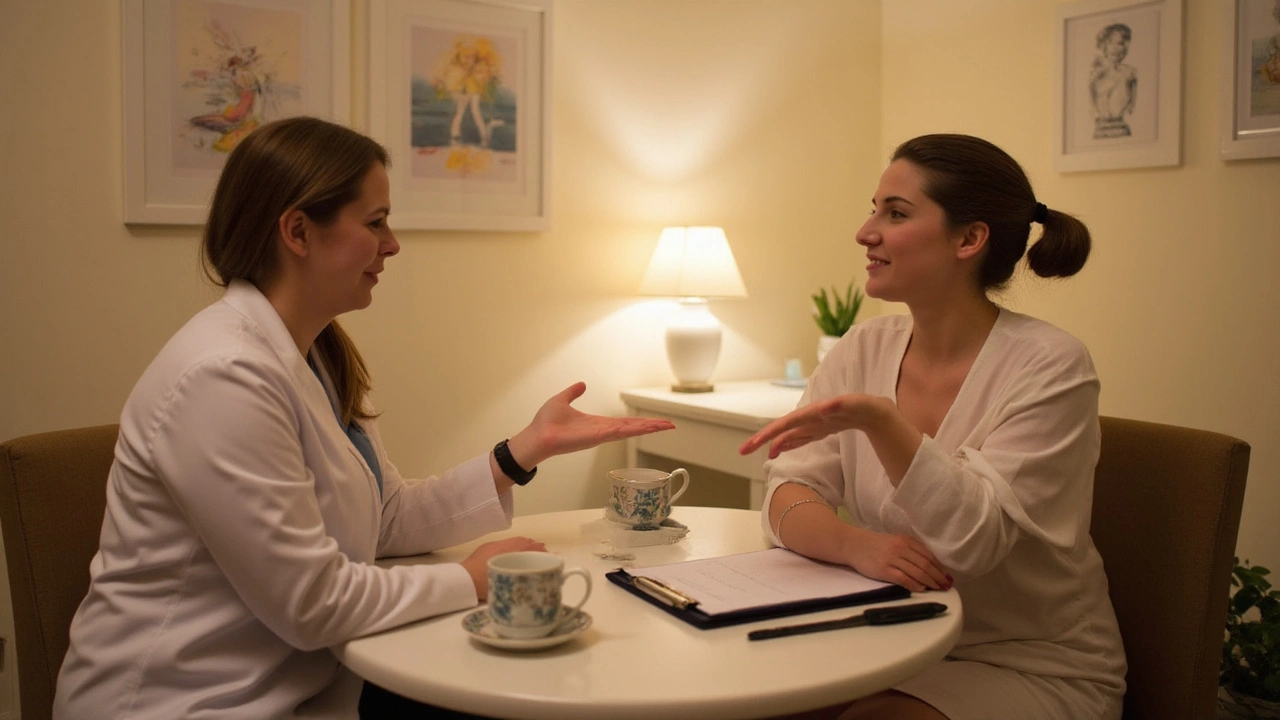Client‑Therapist Relationship: Keys to a Great Massage Session
If you’ve ever walked into a massage room feeling unsure, you’re not alone. The vibe between you and your therapist can make or break the experience. A solid relationship builds trust, eases tension, and lets the therapist work where you need it most. Below are practical steps you can take before, during, and after a session to keep things smooth.
Before the Session: Setting the Stage
Start with a quick chat when you book. Let the therapist know if you have injuries, medical conditions, or areas you want to avoid. A simple, “My lower back has been sore for a week,” gives the therapist a clear direction and shows you’re open about your needs.
Ask about the therapist’s style. Some prefer light, relaxing strokes while others focus on deep pressure. Knowing this ahead of time helps you pick the right match and avoids awkward moments later.
Show up a few minutes early. This extra time lets you fill out any intake forms, discuss preferences, and settle in. Rushing in can raise anxiety for both of you, and nobody wants that.
During the Session: Keeping the Flow
Communication is a two‑way street. If the pressure feels too hard, speak up. A quick, “Could you ease up a bit?” is all you need. Most therapists see feedback as a sign you’re engaged, not as criticism.
Watch your body language. Relaxed shoulders, steady breathing, and a calm face tell the therapist you’re comfortable. If you tense up, the therapist can adjust technique to help you release that tension.
Respect boundaries. If a therapist asks to check a sore spot, it’s fine to say no. The same goes for areas you’d rather keep covered. Clear limits keep the session professional and pleasant.Take note of how you feel after the massage. A quick mental check—“I feel lighter, my neck is less tight”—helps you understand what worked and lets you share useful feedback next time.
When the session ends, thank the therapist. A simple, “That was exactly what I needed,” reinforces a positive connection and encourages the therapist to keep that approach for future visits.
Building a strong client‑therapist relationship doesn’t require a massive time investment. Just a few honest words, a little planning, and an open mind go a long way. When you feel heard and respected, the massage works deeper, and you walk out feeling refreshed.
Next time you book, remember these tips: be clear about your needs, speak up during the session, and give quick feedback afterward. A good relationship makes every massage better, and you’ll notice the difference from the first session onward.
How to Communicate Effectively with Your Massage Therapist: Best Ways to Get the Perfect Massage
Want a great massage every time? Learn how to talk openly with your massage therapist to get exactly what you need, from pressure to privacy.
VIEW MORE
